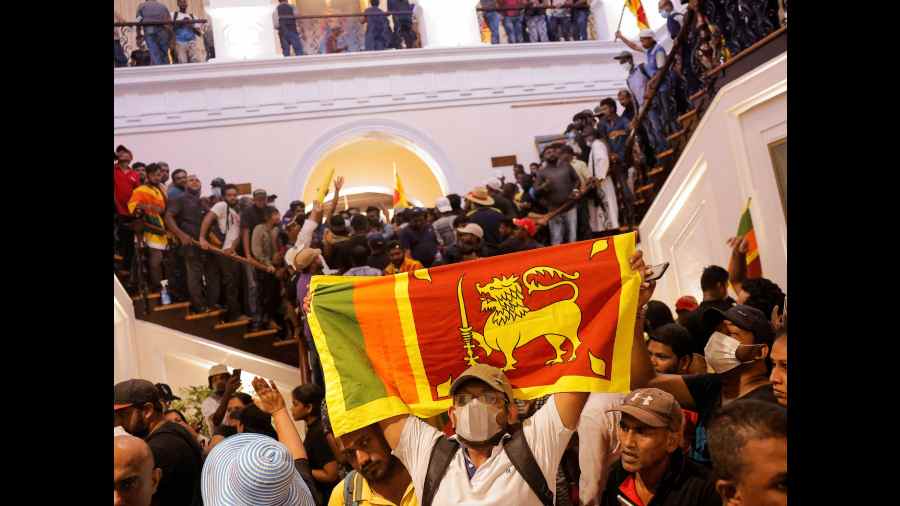When future generations talk about what is happening in Sri Lanka today, do you think they will recall The Bed? Do you think, like the burning of the Jaffna library in 1981, there will be political plays spun around the occupation of The Bed? Do you think that just as Mahinda Rajapaksa, Gotabaya Rajapaksa, Chamal Rajapaksa, Basil Rajapaksa are all of the bud — it is the symbol of the Sri Lanka People's Front — some day there will be an order of The Bed?
Perchance to dream
The images show protestors lounging, taking selfies and mock wrestling in an antique bed in opulent Temple Trees, President Rajapaksa Gotabaya’s residence in Colombo. Protestors also swam in the pool, entered the kitchen, cooked in the lawns, toured the palace, wondered at the menu, curled up in the sofas. They voiced comparisons between their lives and the President’s at a time when the country’s economy had packed up, when they paid Rs 30 for one egg and close to Rs 1,900 for a packet of milk powder. In April, the price of fuel had crossed Rs 400. (One Sri Lankan rupee equals 0.22 Indian rupee.) But a bed is different from a pool, a kitchen or a gym.
Wake-up call
A hotel chain in the UK used to claim as its USP the fact that the Queen’s bed-maker made the beds in their properties. You might also remember how some years ago, tourism authorities in Iraq offered honeymooners special packages wherein they could sleep in one of Saddam Hussein’s grand beds at an atrocious price. But can a grand bed guarantee a grand sleep or rest? Would Rajapaksa have slept well in that or any other bed? The Rajapaksas as a family have been at the helm of Sri Lankan politics for two decades. The charges of political corruption against individual members of the family are not new. The charges of discrimination against minorities are not new. The charges of muffling the media are not new. Only the united protests are. Will the Sri Lankan protests speak to all people of all democracies? When they look at The Bed, what will they see, who can say?










